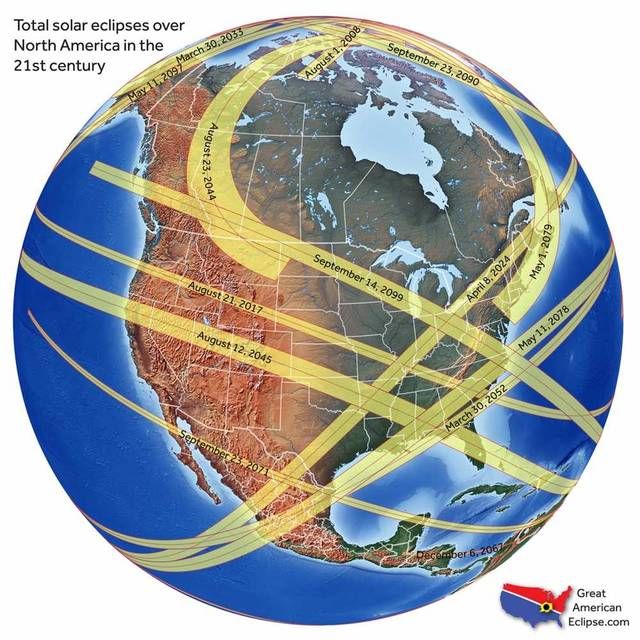Click here to subscribe today or Login.
DALLAS — Misericordia University professor Heidi L.K. Manning knows a lot about solar eclipses.
Manning once served as a researcher at NASA’s Goddard Space Flight Center in Maryland and participated in the development of the Sample Analysis at Mars instrument suite for the Mars Science Laboratory rover Curiosity.
She also took part in the development and calibration of the Cassini Orbiter Ion and Neutral Mass Spectrometer, which are orbiting Saturn investigating the atmosphere of the planet and its moons.
Manning, dean of Misericordia’s College of Arts and Sciences, acknowledged there is a lot of “buzz” about the total solar eclipse today because it is passing across the entire continental United States and will be visible for “so many people.”
The total eclipse will cover a relatively narrow path, about 70 miles wide, starting in Oregon at 10:16 a.m. Over the next 90 minutes, the path will cross through Idaho, Wyoming, Montana, Nebraska, Iowa, Kansas, Missouri, Illinois, Kentucky, Tennessee, Georgia, North Carolina and South Carolina.
Northeastern Pennsylvania will experience a partial eclipse — about 75 percent — from 1:18 p.m. until 3:57 p.m. EDT, with prime viewing at 2:41. Three-fourths of the sun will be blocked out as the moon passes in between the Earth and sun.
Manning noted that total eclipses are rare; the last eclipse of any kind in the continental United States was in 1979, and that one went from Oregon to the edge of North Dakota.
Manning said she’ll get a pair of eclipse glasses to watch the partial view today.
“It will still be bright out at that time, but fun to see,” she said. “The cool thing to notice at that time is the shape of the shadows. If you see sunlight going through leaves on a tree, all the spots of sunlight will be little crescents in the shape of the partially eclipsed sun.”
Manning said the eclipse will be interesting because it will get dark in the middle of the day quickly. She said at total eclipse, the corona — the glow around the darkened sun — can be seen.
“We can’t see the corona unless the intensity of the sun is blocked out,” she said.
Manning explained the science of the sun and what gives the star its power — basically, what keeps it going.
“The sun has been there for 4 1/2 billion years, and it will continue for about another 4 1/2 billion years,” Manning said. “So you can say it’s a middle-aged star. But it won’t go on forever.”
Manning said the sun eventually will run out of fuel — hydrogen — which fuses into helium.
“So about 5 billion years from now, the sun will run out of hydrogen,” she said.
But at least for the next few billion years, it will come up every morning.






